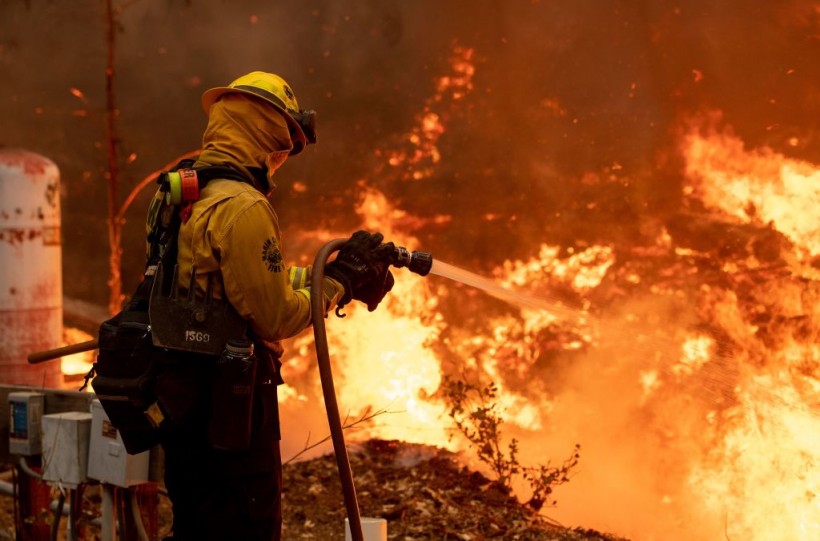Over 2.4 million acres have burned by wildfire this year, which is twice the acreage usually scorched during Alaska's wildfire season.
Extreme temperatures, drought, and thousands of lightning bolts, a Mail Online report said, each day led to wildfires igniting wildfires across the interior of Alaska.
Baked Alaska: 225 wildfires sparked by the state's 35,000 lightning bolts this year have ... https://t.co/IRrx2Yct3G via @MailOnline
— Irene Ochoa (@missyjoblu2) July 7, 2022
Moreover, the wildfire season in Alaska usually starts in late May and ends in late July, and the Nation Park Services explained, on average, one million acres are burning across the state every year.
The blazes are being kindled by lightning strikes plaguing the state, almost 25,000 bolts were detected between June 28 and July 4, and over 10,000 have hit since then.

Over 2.4 million acres have burned by wildfire this year, which is twice the acreage usually scorched during Alaska’s wildfire season.
Global Warming
Only approximately 1,000 firefighters in the state's interior are tirelessly working around the clock to put out over 225 fires, which have forced hundreds of residents from their homes.
Alaskan climate specialist Rick Thoman from the University of Fairbanks said early in the season; that southwest Alaska was among the few sites in the state with below-normal snowpack.
Then, he added, they had a warm spring, and southwest Alaska dried out. More so, an outbreak of thunderstorms "there in late May and early June provided the spark."
Global warming has increased the amount of fuels; the trees and plants are trees that are available to burn. More fuels mean more intense fire, a related Grid report said.
Therefore, the weather factors, the warm springs, unusual thunderstorm activity, and low snowpack, combined with decades of warming that has enabled vegetation to grow in southwest Alaska, fuel an active fire season.
Red-Flag Warning
Last weekend saw strong storms, with data that reported over 7,180 lightning strikes in Alaska and neighboring sections of Canada, said the Bureau of Land Management's Alaska Fire Service, according to a Washinton Post report.
In the last ten years, another 10,500 bolts stuck the following day, bringing the two-day tally. Then, early this week had 10,195 bolts more in total.
The National Weather Service office in Fairbanks has released a red-flag warning for fire weather across much of the state's interior.
As specified in the advice, ample lightning, as many as 5,000 lightning strokes each day, could result in numerous new fires "starting through Friday."
Wildfires Affecting Air Quality
The Bureau of Management's Alaska Fire Service stated that the last time Alaska reached two million acres burned was July 2015.
Over 5.1 million acres burned throughout the state during the fire season, the second-highest total for acres burned in the last two decades.
For the whole 2019 fire season, Alaska saw around 2.6 million acres burned. The state is currently on track to go beyond the total acreage burned in the record 2004 season when over six million acres went up flames.
Moreover, the wildfires are affecting air quality in all sites of the interior, which is causing a lot of residents to flee their homes.
Preparedness Level 5
Communities in Anderson, Clear, and Clear Force Station, on Tuesday, were urged to prepare a "go bag" if there would be a need for them to evacuate to escape incoming fires.
Thoman shared on Twitter early this week saying Fairbanks Airport is currently reaching 300 cumulative hours with visibility decreasing wildfire smoke, all since mid-June.
According to an Alaska Wildland Fire Information report, the Alaska Interagency Coordination Center released a Preparedness Level 5, the highest wildland fire activity level, for the seventh day.
Related information about Alaska wildfires is shown on Science Magazine's YouTube video below:
RELATED ARTICLE: Wildfires Devastate Evia Island, Causing Greek Islanders to Flee Their Homes; How Do Heatwaves Impact Humans, Nature?
Check out more news and information on Environment and Climate in Science Times.














